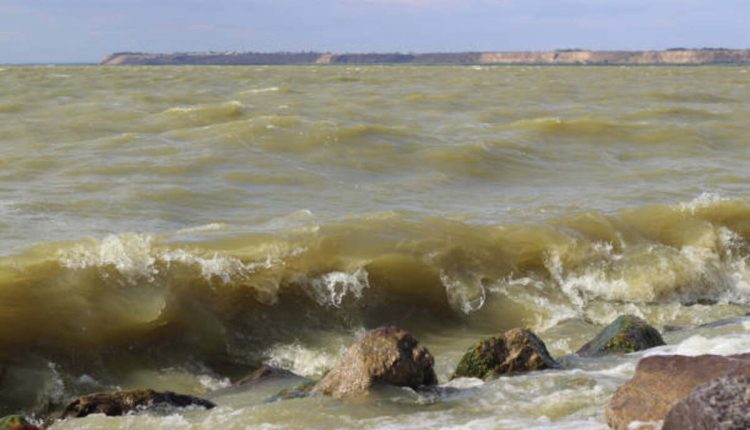The Buffalo River carves deeply into bedrock, creating large vertical bluffs along river bends. Free-flowing and without dams, it flows without interruption or restrictions.
The river is a favorite among recreational floaters, thanks to a steady amount of rainfall throughout the year, which keeps water levels sufficient for floating.
Park staff regularly conduct water quality monitoring at 32 locations along the Buffalo National River, monitoring for factors like dissolved oxygen, pH levels, temperature fluctuations, and bacteria (fecal coliforms and E. coli).
Floating Conditions
The Buffalo River can vary considerably in floatable conditions depending on rainfall levels, with Upper sections only having enough water for floating during spring and summer; Middle and Lower sections, on the other hand, typically provide enough floatable space throughout the year. Before embarking on any floating trip at Buffalo River, it is advisable to consult your outfitter to make sure there is enough water for an enjoyable and safe journey.
Spring and summer are the peak times to float the Buffalo River as water levels reach their highest. At these times, the river offers its most breathtaking scenery and ideal floatable conditions; however, this also increases crowd levels considerably – you may need to book accommodations well in advance to secure your place along its shores.
As you cruise down the river, you will witness breathtaking landscapes filled with natural beauty and abundant wildlife. The area is home to various species of birds and animals, including deer, raccoons, and small mammals such as bats.
The Upper Buffalo River boasts some stunning bluffs and rapids that offer an exciting float experience, but the high level of water in this section makes it best suited to those with more experience floating rivers and paddling through rough waters. Hiking to Hemmed-in-Hollow (home to one of the highest waterfalls between Appalachians and Rockies) should also not be missed as a must!
Flood Warnings
The Buffalo River, like most streams and rivers in the Boston Mountain ecoregion, is driven primarily by rainfall. This means its hydrograph may rise rapidly while flood damage may be brief; however, due to significant spring inputs into its system, its resilience exceeds those found on the Springfield and Salem plateaus.
Flood Warnings have been issued for several locations along the Buffalo River and its tributaries, where minor to significant flooding may occur as this storm moves through. A Flood Watch remains in effect for other parts of the park where flooding remains possible and could occur rapidly.
Communities across the Northeast are recovering from flooding caused by heavy rainfall. New Jersey was ferocious hit, forcing some to evacuate their homes while flooding at Hoboken Station (one of the busiest Northeast Corridor stops) did not halt train services.
Floodwaters have also reached Lodi, New York, area homes where basements and lower levels are flooded, prompting fire department crews to visit street by street in search of any residents who may require evacuation assistance. Long-term monitoring by park staff of Lodi River’s health through its tributaries has allowed early detection and response to potential issues; the park’s water lab tests for dissolved oxygen levels, pH, turbidity levels, temperature, bacteria (E. coli), and nutrient levels, among others.
Weather Conditions
Due to an ongoing drought, portions of the Buffalo River in Searcy County have become dry or low, and guides from Silver Hill Float Service are cautioning visitors before undertaking a float trip on this national park river.
The Buffalo River boasts a unique karst topography that produces numerous springs and sinkholes with clear water abundant with dissolved minerals, creating an ecosystem rich with diverse biodiversity that offers unparalleled recreational opportunities in Arkansas.
Massive water-stained bluffs rising 500 feet above your canoe; America’s highest waterfall between the Appalachians and Rockies; backcountry campsites on gravel bars throughout 135 miles of free-flowing river; these are among the many reasons that make the Buffalo River one of America’s premier river trips. And with over 20 access points throughout its 135-mile length, finding your ideal route should be effortless.
The water levels on the Buffalo River are optimal for floating between November and May when higher spring-fed flows due to snowmelt contrast with lower summer-time evaporation rates. Six USGS stream gauges monitor current flows by reporting stage (feet) and discharge (cfs). Learn more about USGS stream gauges, such as how they work, and interpret their information before planning your float trip.
Safety
Rafts and kayaks may flip due to rapids on rocky river bottoms, making it vital that paddlers inspect water levels in parks as well as weather conditions before setting out on their trip. Rainwater hitting headwater areas may cause the Buffalo River’s water levels to surge more than 10 feet over one day, so paddlers should check its level on both days prior to and morning of their excursion.
Buffalo River residents have expressed significant concern about toxic blue-green algal blooms on its banks caused by higher water temperatures and an influx of nutrients such as phosphorus. Over seven years, the park has monitored the river and its tributary water quality at 32 locations along its course for issues related to toxic blooms such as dissolved oxygen levels, pH values, temperature readings, turbidity measurements, bacteria (fecal coliform and E. coli), and nutrient measurements.
American National Rivers’ advocacy group ranks the Buffalo River as one of America’s most endangered rivers due to waste runoff from C&H/Cargill’s hog farm near Mount Judea in Newton County.
Since the completion of the Buffalo River and City Ship Canal dredging project, its primary aim has been to increase dissolved oxygen in river sediment to promote fish habitat and mitigate risk. While this does not entirely eradicate contamination risks, it may reduce concentrations over time. Several brownfield sites within the 6.2-mile Area of Concern, such as Sovereign Specialty Chemicals, Steelfields (formerly Republic Steel and Donner-Hanna Coke), and Buffalo Color have already been addressed through New York State cleanup programs such as Sovereign Specialty Chemicals; Steelfields (formerly Republic Steel Donner-Hanna Coke), and Buffalo Color among many others.










